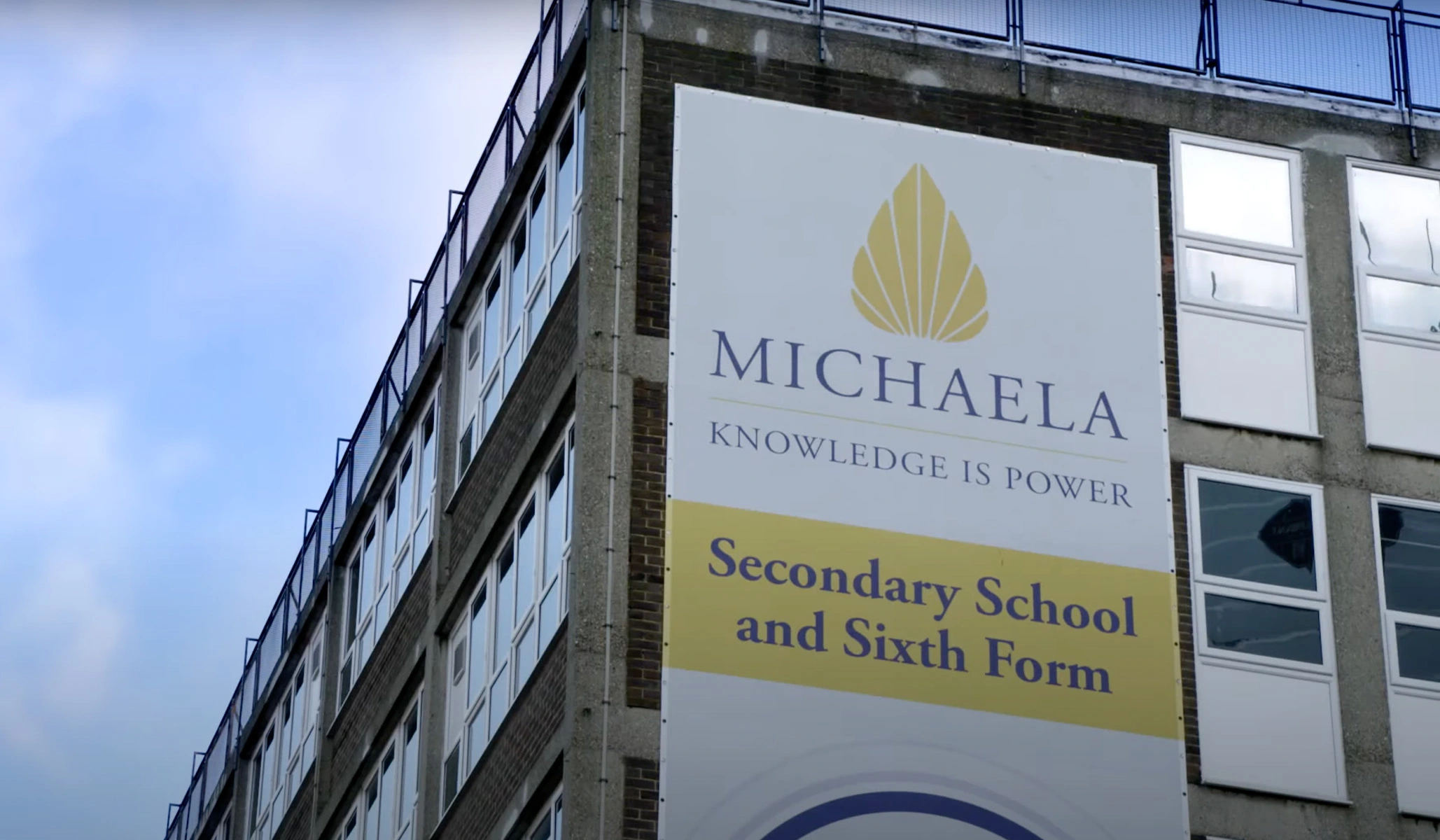In a recent visit to the U.K., I had the opportunity to observe London’s Michaela School, a legendary institution known for its exacting school culture and unwavering commitment to academic excellence. The school practices a muscular brand of academics, character formation, and student discipline not seen in the U.S. since the heyday of “no excuses” charter schools like KIPP two decades ago. The school’s founder, Katharine Birbalsingh, is a formidable and outspoken critic of progressive teaching methods, and Michaela emphasizes direct instruction and explicit teaching of challenging curricular content. The school routinely delivers some of the best student outcomes in the U.K., with a mostly disadvantaged urban student population.
My visit reinforced a notion that I’ve been toying with for the last several months: America needs Michaela. The U.S. school-choice movement, in particular, needs Katharine Birbalsingh or someone very like her. The rapid adoption of universal education savings accounts (ESAs) in several U.S. states has created an unprecedented opportunity for affordable private schools to sprout and take root in this country. If there’s ever going to be a serious challenge to the standard American paradigm of schooling with the vast majority of children assigned by zip codes to public schools, the time is now in states such as Florida, Arizona, and a half dozen others that have demonstrated both the appetite and the political will to challenge the hegemony and complacency of traditional public schools.
While ESA enthusiasts have largely focused on parents’ ability to customize their child’s education, most working families need their children to be in a school during the day, which limits the potential uptake of ESAs. In many communities, there’s not a huge supply of high-quality private schools. Thus, the greatest long-term opportunity associated with ESAs is the potential to jumpstart and grow effective and affordable private-school models that even the charter sector would be hard-pressed to match. When Arizona adopted universal ESAs, for example, Great Hearts Academies, a well-regarded charter-school operator, moved quickly to launch a network of private, classical Christian academies aimed at low-income families who are now armed with an average of $7,000 of state money per child — fair game under the state’s universal ESA program.
When I asked Birbalsingh about bringing Michaela to America, she was flattered by the suggestion but not ready to book passage to the U.S. Like many visionary school leaders, she is open to scaling her model but fiercely protective of its high standards and distinctiveness. She also expressed some doubt that she’d find enough teachers willing and able to teach “The Michaela Way.” On this last point, I think she’s misperceiving the state of play in the U.S. and underestimating the number of American teachers struggling with deteriorating student behavior, feeling out of sync with pedagogical fads and fashions, and who would flourish in a Michaela-like setting outside of the public sector.
With its emphasis on rich curriculum, academic rigor, character education, and “small-c conservative” values, Michaela would find an enthusiastic audience among inner-city families who prize safe and orderly schools, a shot at the upward mobility a first-rate education offers, and who tend to be far more culturally conservative than outsiders often imagine. Even a subset of elite private-school parents uncomfortable with their schools’ aggressive embrace of the “woke” agenda would also be intrigued. If Birbalsingh needs convincing, she could talk to Andrew Gutmann, a.k.a “Brearley Dad,” who set the private-school world on its ear two years ago when he withdrew his daughter from the hyper-exclusive Manhattan school after blasting its “obsession with race” and efforts to appease “an anti-intellectual, illiberal mob.” He’s been on a mission to find a replacement ever since and sees “a desperate need” for schools such as Michaela in the U.S. “given that most secular schools in this country have abandoned traditional academics, hard work, discipline and respect for the community.”
There are considerable hurdles to building networks of modest-cost private schools in the U.S., not the least of which is real estate. Great Hearts, for example, is partnering with churches that have available buildings that can host a school. There may be a role for education philanthropists to assist, particularly those who’ve grown disenchanted with their inability to drive lasting change in the public sector. Universal ESAs are truly something different under the sun. If they are to be more than an immune response to discontent with traditional public schools, or a boutique option for the most engaged and well-off families, strong institutional alternatives to the public system are needed. That means well-run and effective schools that appeal to parents. I can think of no better example than Michaela.

